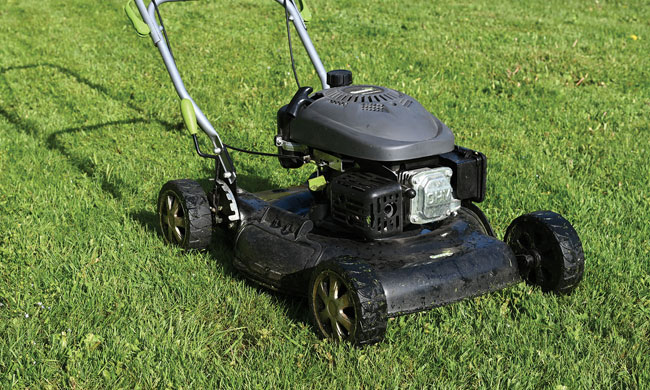Live Better
Health benefits of turmeric

I’m not much of a cook, however, I believe in strengthening and healing the body through healthy food choices. And that includes spices. There are countless spices, powders and roots that are believed to have medicinal properties. One that stands out to me above all others, though, is turmeric.
All of the research I’ve done of this bright yellow food source indicates that it is packed with properties beneficial to the body and overall health. Thousands of documented studies have been conducted testing the components of turmeric and it’s effects on the body both internally and externally. It has been noted to be a powerful anti-inflammatory, a potential cancer fighter, a source for antioxidants, good for skin health and can fight Alzheimer’s. Of course, it may affect everyone a little bit differently. One of the research websites I stumbled across was www.myhealthylivingcoach.com. The infographic pictured below, as well as in-depth information, is from that website and details the potential health benefits of turmeric.
I personally add turmeric powder to a mug of warm water every morning.
You can find the direct link to the site here.

Here’s a Recap
Turmeric is a popular spice for cooking, but it has a long history of medicinal uses, too. It is one of the most researched natural remedies available and there are numerous studies validating its healing properties. Turmeric provides a wide variety of benefits, but there are seven standouts. Once you know about these seven benefits you’ll be eager to add the spice to your diet.

Source: www.myhealthylivingcoach.com
Antioxidant
The active ingredient in turmeric is curcumin, which is known as a powerful antioxidant. This means it targets dangerous free radicals in the body and reduces the damage they are able to cause DNA and cells. When cells are healthy the body is healthy, which means turmeric offers general wellness benefits, as well as targeting specific health problems.
Anti-Inflammatory
Curcumin also has anti-inflammatory qualities. This makes it effective for fighting heart disease, osteoarthritis pain, and other health problems related to inflammation (researchers believe there are many links between inflammation and chronic illness). Curcumin is believed to reduce certain enzymes in the body known to trigger inflammation.
Heart Health
Turmeric reduces the risk of blood clots and prevents the build up of plaque in the arteries, which helps in the battle against stroke and other clot-related problems. There are also studies showing turmeric is beneficial for reducing bad cholesterol and improving good cholesterol, both of which play a role in a person’s heart health.
Slows the Progression of Alzheimer’s
Researchers studying the effects of curcumin in relation to Alzheimer’s cite the health of those living in regions that consume turmeric in high quantities. People in India aged 70 and older have a much lower rate of Alzheimer’s disease than those in the same age group in the United States. Many believe this difference is due to the high intake of Indian curries, which are made with turmeric. Further research points to turmeric’s ability to remove amyloyd plaque buildup in the brain, which is believed to put people at risk for developing the Alzheimer’s.
Natural Painkiller
An article in the July 2009 issue of Time magazine points to a study conducted at the University of Arizona. Researchers found rodents injected with a material known to cause joint pain suffered less when the injections were paired with curcumin. The article also cites anecdotal evidence singing the praises of turmeric for fighting a variety of pain that would otherwise be treated with over-the-counter pain medication.
Skin Health
Turmeric’s anti-inflammatory benefits can be beneficial when applied topically, too. It is considered an effective treatment for psoriasis and other skin disorders, and it is a natural antiseptic and can be used to treat burns and cuts.
Cancer Fighter
The jury is still out on just how effective turmeric is for fighting cancer. Some health experts point to its anti-inflammatory benefits and draw conclusions based on the link between inflammation and the development of cancer. Free radicals and cell damage are believed to be linked to cancer, too, so if turmeric is able to work as an antioxidant it has a secondary anti-cancer effect.
According to well-known holistic health practitioner, Dr. Andrew Weil, turmeric reduces the carcinogenic compound that form when meat is fried, grilled, or boiled by up to 40%. Dr. Weil also believes turmeric is effective for fighting melanoma and in halting the spread of breast cancer.
There are also preliminary studies showing turmeric could be beneficial for preventing breast, prostate, skin, and colon cancer. Since turmeric is safe and offers a variety of general heath benefits, you have nothing to lose by adding it to your diet in moderate amounts. If you plan to use concentrated doses of curcumin in your cancer treatment plan, be sure you inform your doctors to prevent any interference with other components of your treatment.
Live Better
Get ready to grill: Choosing the right outdoor cooking solution

(Family Features) Warmer temperatures and sun-filled days mean it’s time to take entertaining and socializing outdoors, and a key component of many outdoor gatherings is fresh-grilled food.
Because firing up the grill can make prepping meals quick and easy, it allows you to spend more time with friends and family rather than missing out on the sunshine while stuck in the kitchen. Whether you’re a first-time griller or consider yourself a master of the grates, there’s a grill available to meet your skill level and needs, such as these options that provide flexibility for small-to-midsize backyard spaces – as well as a large built-in model for custom outdoor kitchens – and a variety of features and function to make the most of your warm weather gatherings.

Portable, Small-Space Cooking
Ideal for first-time grillers, couples, small families or those with limited backyard spaces, the Megamaster 3-Burner Gas Grillwas designed to fuse performance and value. Despite its size, it can cater to almost any grilling or entertaining need with three stainless steel burners and 447 square inches of cooking space, a combination of versatility and capacity to prepare large quantities of food as well as various types of food simultaneously. Plus, it’s easy to maneuver on two heavy-duty wheels, making it simple to free up patio space after use. Learn more at megamaster.com.

Family-Sized Functionality
With ample cooking space to feed small and medium-sized groups, the Nexgrill 4-Burner Gas Grill with Side Burner is a perfect all-around grill for both beginners and seasoned grilling enthusiasts. Always ready to fire up some flavor, the durable grill also features a stainless steel side burner to saute, simmer and warm dishes simultaneously as well as 628 square inches of cooking space, meaning family favorites like burgers, dogs, chicken and more can be put on the table quickly. Find more information at nexgrill.com.

Elevate Your Outdoor Kitchen
If your outdoor living area includes enough space, you can elevate the outdoor cooking experience with an outdoor kitchen. Put a premium, built-in grill like the Spire 6-Burner Built-In Grill at the center of your custom, luxurious entertaining space. This dual-fuel, stainless steel gas grill features 904 square inches of cooking space and 73,000 British thermal units of cooking power across six main burners and an intense-heat ceramic rear burner, producing restaurant-quality sear marks and exceptional heat retention. Visit spireoutdoor.com to learn more about the durable, high-performance grilling solution.
SOURCE:
Megamaster
Nexgrill
Spire
Live Better
Tips to make your AC more energy efficient, sustainable

(Family Features) Updating your HVAC (heating, ventilation and air conditioning) system to cool your home in a smart and sustainable way involves several steps that not only improve energy efficiency but also reduce environmental impact.
Consider these tips from the heating and cooling experts at Carrier to help make your cooling system more eco-friendly:
- Upgrade to an Energy-Efficient HVAC System. If your HVAC system is outdated, consider replacing it with a more energy-efficient model. Look for systems with an Energy Star or high SEER2 (seasonal energy efficiency ratio) rating, which indicates better energy efficiency. The higher the SEER2 rating, the more efficient the unit. Financial incentives for installing a higher-efficiency system are available through the Inflation Reduction Act of 2022. You can also shop for rebates from manufacturers and utility companies.
- Look for a Carbon-Free HVAC System. Heat pumps, ductless and VRF (variable refrigerant flow) systems that run on electricity and use low global-warming potential refrigerant, like Carrier’s Puron Advance, can help reduce your home’s negative impact on the environment.
- Install a Smart Thermostat. A smart thermostat can be programmed based on your preferences and adjust temperatures automatically. These devices can be controlled remotely through smartphones and help reduce energy consumption by cooling your home only when necessary.
- Conduct Regular Maintenance. Keep your HVAC system running efficiently with regular maintenance. This includes cleaning or replacing air filters every 1-3 months, checking refrigerant levels, cleaning outside condenser coils and ensuring the system’s components are in good, working condition and the airflow is not blocked.
- Seal and Insulate. Improve your home’s insulation to maintain a consistent temperature. Seal windows, doors and any gaps or cracks to prevent cool air from escaping. This can significantly reduce the workload on your HVAC system.
- Use Ceiling Fans. Ceiling fans can help circulate cool air throughout your home, allowing you to set the thermostat at a higher temperature without sacrificing comfort, thus saving energy.
- Add Window Treatments. Use blinds, shades or curtains to block out sunlight and reduce heat gain during the hottest parts of the day. This simple step can make a big difference in how much your air conditioner needs to work.
- Upgrade to a Variable-Speed Compressor. Traditional compressors operate at full power or not at all. However, a variable-speed compressor can adjust its output to match your cooling needs precisely, resulting in better efficiency, energy savings and improved indoor comfort.
- Ventilate Properly. Ensure proper ventilation in your home, especially in areas like the kitchen and bathroom, to remove excess heat and humidity, which can reduce the need for air conditioning.
- Update Roofing. If you’re replacing your roof, consider cool roofing materials that reflect more sunlight and absorb less heat than standard roofing materials, reducing the heat that enters your home.
By implementing these strategies, you can improve or update your HVAC system to cool your home more sustainably. Not only do these steps help the environment, they can also lead to lower energy bills and improved indoor comfort. Always consult with an HVAC professional to determine the best and most efficient options for your home and needs.
Find more information and tips to sustainably cool your home at Carrier.com.
SOURCE:
Carrier
Live Better
Steps to get your yard ready for spring

(Family Features) As the weather begins to warm and days get longer, it’s important to begin preparing your yard for a healthy growing season. While factors like climate, soil type and grass type can all impact how your yard grows, there are a few steps you can take during the spring months to help your lawn thrive.
From dethatching and aerating to fertilizing and mowing, tackling these simple chores can help ensure your yard looks its best and is prepared to fight off seasonal weeds, disease and drought.
Tune Your Mower
Before it’s time for the first mowing of the season, inspect your mower and perform any routine maintenance necessary. That goes beyond sharpening, or replacing, the blade, and includes changing the oil, spark plugs and filter as well as filling with a fresh tank of gas.
Loosen the Thatch Layer
While it’s important to avoid working on your lawn until after the final freeze to avoid damaging the grass, raking your yard with a spring tine rake to loosen thatch – the layer of leaves, roots and dead grass that builds up between live grass and soil – before the first mow is equally important. Be sure to rake when the soil is dry; if it’s too soft or muddy, you may pull up healthy grass crowns.
Combat Compacted Soil
If your soil has become compacted – likely the effect of heavy foot traffic – and is too dense for water, air and other nutrients to reach the roots of your grass, aerating can help break it up and reduce thatch. A core, or plug, aerator can introduce tiny holes into your soil by removing plugs of grass and soil, which lets nutrients more easily reach the roots. An added bonus, the plugs can decompose on top of your grass, supplying more nutrients.
Fill in Bare Spots
If your lawn is looking sparse, overseeding, which involves spreading grass seed over your existing lawn, can help fill in bare spots. Be sure to choose the right type of seed for your climate and soil type to ensure proper growth. Applying a slow-release nitrogen fertilizer at the same time can provide additional nutrients that are important for promoting healthy growth.
Start Seasonal Mowing
When the ground is dry enough and your grass is long enough to require cutting, begin seasonal mowing. Be sure to use proper techniques, including varying your mowing direction each time to avoid creating patterns or ruts, and avoid cutting grass too low, which can make the lawn more susceptible to weeds and drought stress. In general, never remove more than one-third of the grass blade at a time.
Find more tips to help get your yard ready for warm weather at eLivingtoday.com.
Photo courtesy of Unsplash
SOURCE:
eLivingtoday.com
-

 NEWS1 year ago
NEWS1 year ago2 hurt, 1 jailed after shooting incident north of Nocona
-

 NEWS6 months ago
NEWS6 months agoSuspect indicted, jailed in Tia Hutson murder
-

 NEWS1 year ago
NEWS1 year agoSO investigating possible murder/suicide
-

 NEWS1 year ago
NEWS1 year agoWreck takes the life of BHS teen, 16
-

 NEWS9 months ago
NEWS9 months agoMurder unsolved – 1 year later Tia Hutson’s family angry, frustrated with no arrest
-

 NEWS12 months ago
NEWS12 months agoSheriff’s office called out to infant’s death
-

 NEWS1 year ago
NEWS1 year agoBowie Police face three-hour standoff after possible domestic fight
-

 NEWS1 year ago
NEWS1 year agoDriver stopped by a man running into the street, robbed at knifepoint





